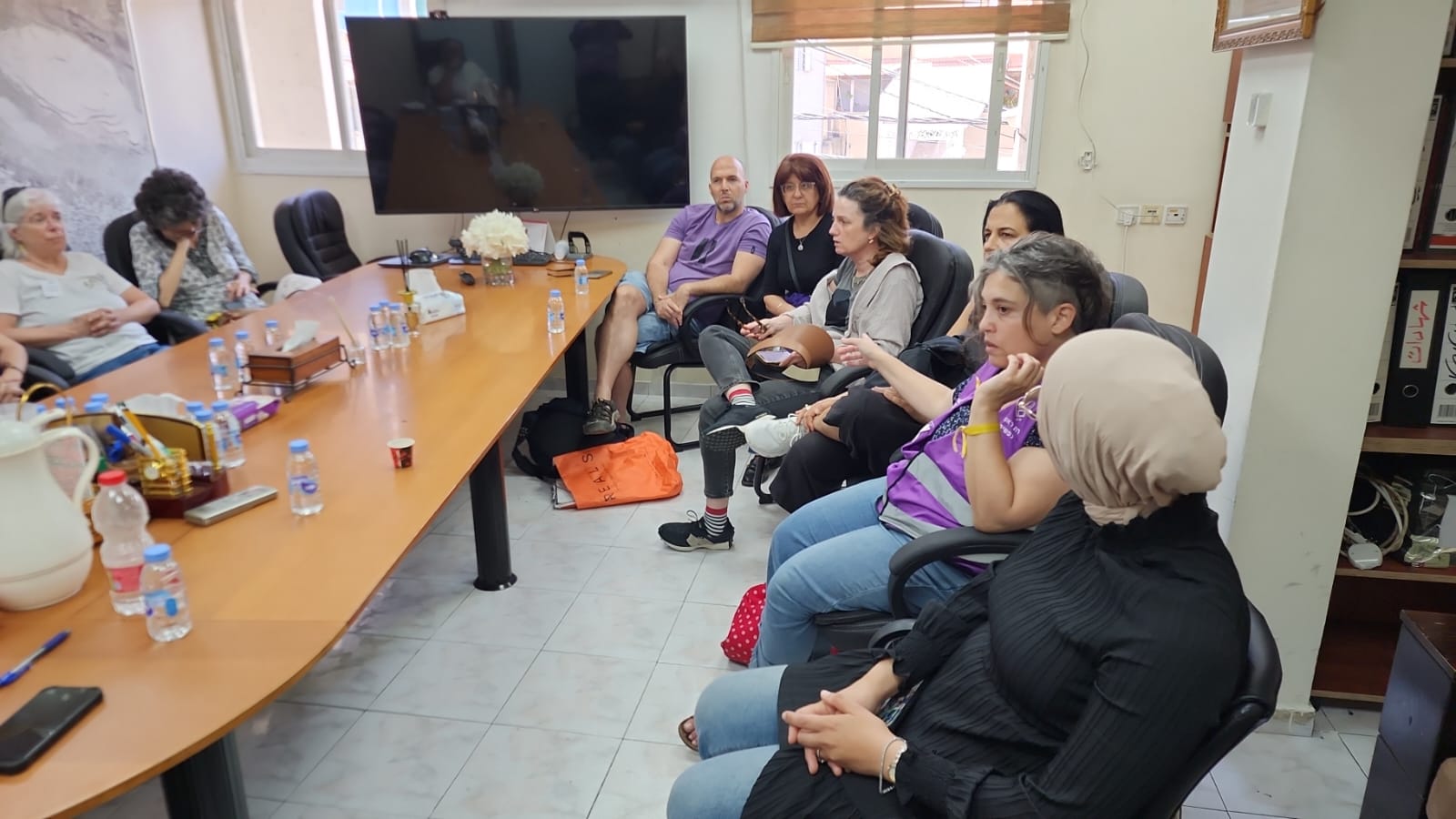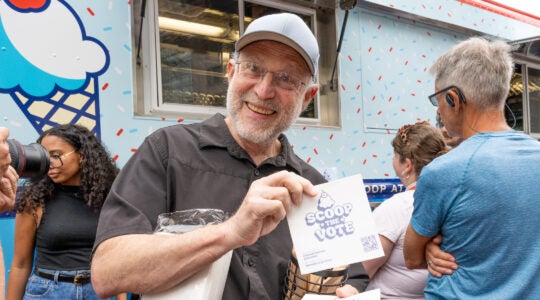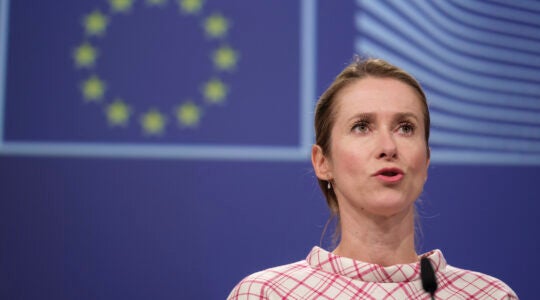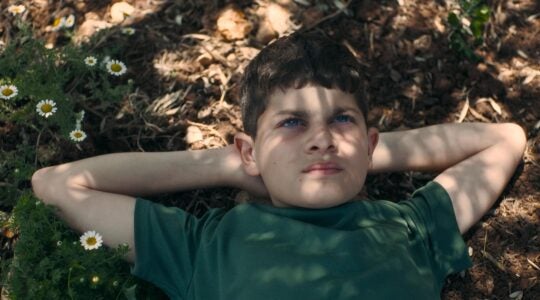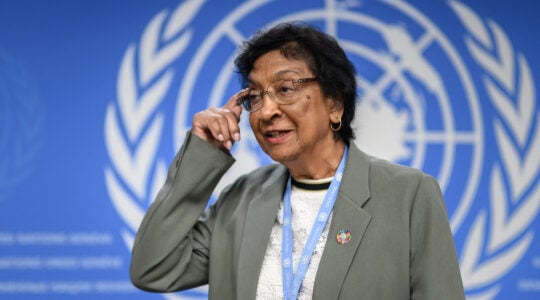When Haviva Ner-David entered the Muslim-majority city of Tamra, about 15 miles from her kibbutz in the Lower Galilee, she was surprised to find it bustling. Despite the searing heat, ongoing Iranian missile strikes and the lack of bomb shelters, thousands had come to mourn four women from the Khatib family killed in a ballistic missile strike that Sunday.
“The streets were filled with people stopping each other, asking where the men’s mourning tent was and where the women were sitting,” Ner-David said.
Many had braved missile fire and extreme heat not only because of the scale of the tragedy — Raja Khatib lost his wife, Manar al-Qasem Abu al-Heija Khatib; his two daughters, Shada, 20, and Hala, 13; and his sister-in-law, Manar Diab Khatib — but also due to a viral video in which a Jewish man is heard singing “May your village burn” as a missile fell, ostensibly over Tamra.
Over the three-day mourning period, the Khatib family was visited by a steady stream of people from across Israeli society — Muslim and Christian Arabs, Druze, Orthodox Jews, and, on the final day, President Isaac Herzog.
Herzog and others noted during their visits that the Tamra strike illustrated the danger presented to Israelis of all backgrounds of the Iranian onslaught — reinforced on Friday when Muslim clerics and worshippers were injured when a missile struck a Haifa mosque.
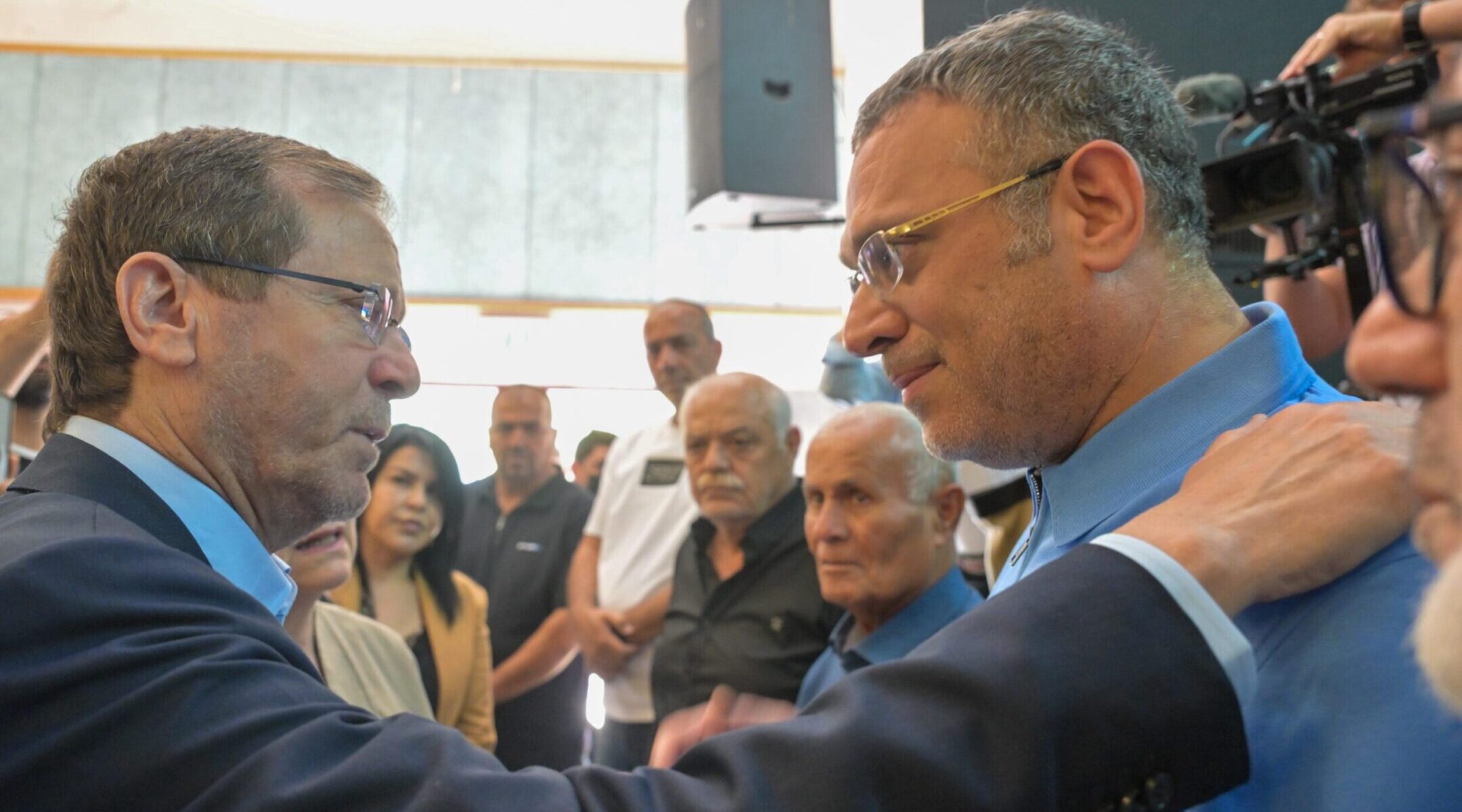
Israeli President Isaac Herzog’s office released pictures of him consoling the grieving in Tamra during a visit on June 15, 2025. (Photo by Kobi Gideon for GPO)
“Four of our citizens were killed in Tamra. I’ve heard cheers of rejoicing and I reject that vehemently,” Prime Minister Benjamin Netanyahu, who did not visit, said in a statement the day after the attack. “The missile makes no distinction. It harms Jews as well as Arabs. They’re coming to destroy all of us, and we stand in this battle together.”
The visits also represented a heartfelt expression of cross-cultural solidarity at a time of national crisis.
Social worker and art therapist Tali Gillan organized a group of volunteers, including doctors, nurses and therapists, to assist the community. The team arrived on Monday, the day before the funeral, and coordinated with municipal officials to identify needs and ensure culturally sensitive, effective support.
“We came first to listen, to see what was needed,” said clinical psychologist Hagar Dror Maliniek, also part of the team. “We offered support from a place of respect, not condescension.”
Dror Maliniek said she had been terrified to make the 20-minute drive from her home in Harduf, having not left since the Iranian strikes began. En route, she heard a siren on the radio warning of an incoming attack elsewhere in the country. It took her a moment to realize it wasn’t directed at her area.
“I jumped out of my skin when that happened. I was really scared to go. But I felt it was very, very important for me to do this.”
Gillan and Dror Maliniek noted that the municipality had already mobilized several services on its own. Within two days of the strike, a mental health response system was in place not only for residents, but also for municipal staff — teachers, social workers and others who were simultaneously processing personal trauma while supporting the broader community.
“Tamra might be a city of 40,000, but everyone knows each other. This missile disrupted the entire fabric of life here,” said Gillan.

A delegation of Israelis traveled to Tamra to console the Arab families mourning there after a deadly missile strike. (Courtesy Haviva Ner-David)
“Everyone wants to help. I was pleasantly surprised by all the support we got, from professionals, to MKs to regular people,” sid Salah Awad, Tamra’s deputy mayor, said on Friday. “Everyone pulls together in times like this. People stayed at the site of the attack for six days, only going home today.”
Gillan called it a “moral obligation” to offer support. “This was a massive tragedy. There was the Iranian missile that brought death and destruction, but there was a second missile — the one delivered by Israeli racism. That second hit was devastating in a different way.”
The deadly strike has renewed attention to deep inequities in access to public bomb shelters in Arab towns compared to Jewish ones. The video responding to it has also drawn attention to racism against Arabs from within some corners of Israeli society.
Gillan attributed the video to what she described as the normalization of racist rhetoric in public discourse, which she said started with political leaders and has since seeped more widely into Israeli life.
Survey data has shown a high level of racism and racial mistrust among Israelis. A 2021 survey found that half of haredi Orthodox teens in Israel, for example, harbored a high level of racism toward Arabs, while a survey earlier this year found that three quarters of Jewish Israelis feel distrust toward Arab Israelis, compared to 43% of Arabs who felt distrust about Jews.
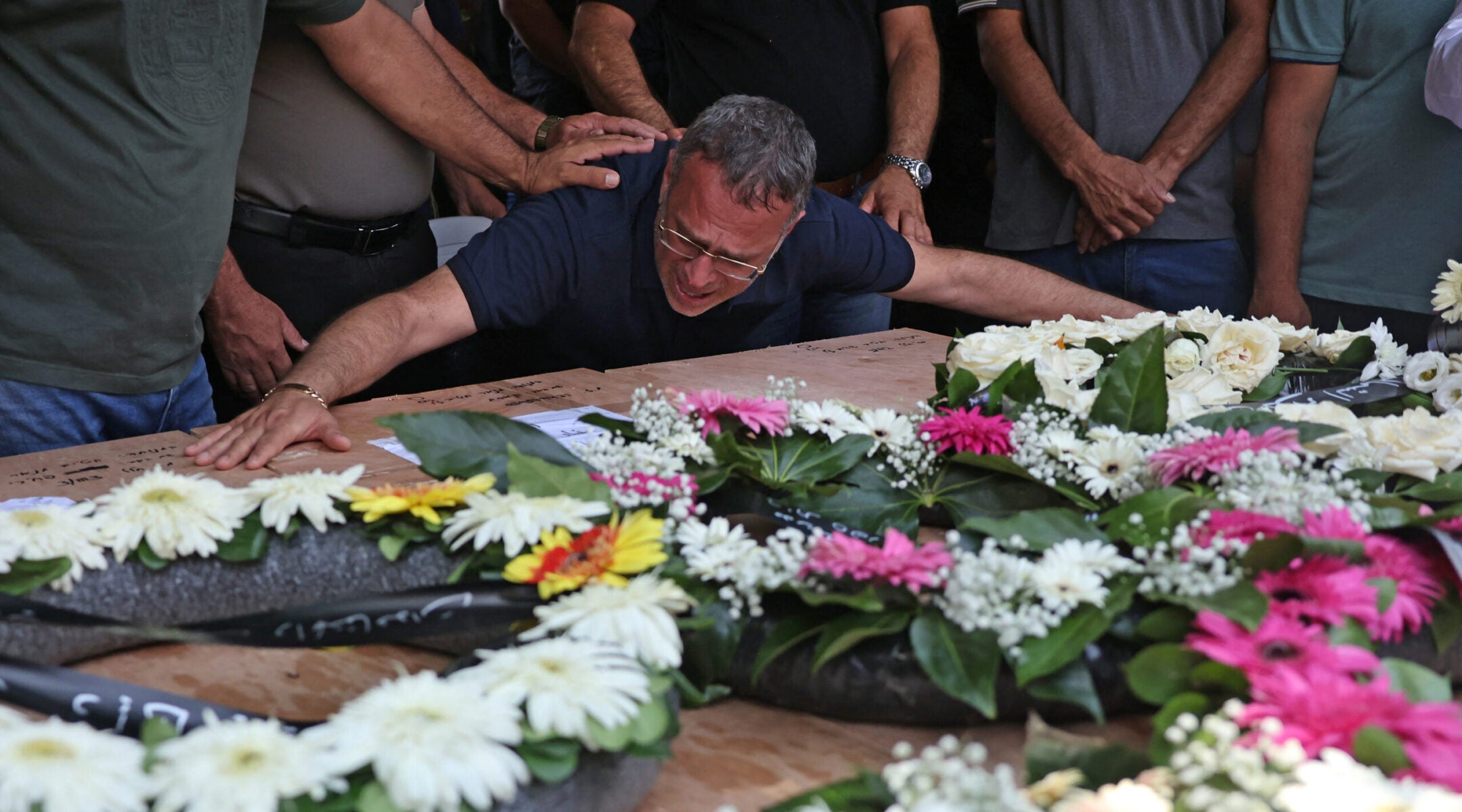
Raja Khatib mourns over a casket during the funeral of his family killed in Iranian missile attack in the northern Arab-Israeli city of Tamra, June 17, 2025. (Ahmad Gharabli/AFP via Getty Images)
Ner-David acknowledged that racism among Israeli Jews exists but said she believed the video reflected the views of a fringe minority, especially from communities in the Galilee where Jews and Arabs often live side-by-side, and where roughly half the population is Arab. She pointed to the flood of visitors to Tamra as evidence.
“People really wanted to come out and show that, no, that’s not the kind of people who live around here,” she said.
Nasser Khatib, the uncle of the young women who were killed, echoed that sentiment, calling the mourners and supporters the real majority. In a video circulated widely in which he called for Israelis to visit Tamra in the aftermath of the attack, he also urged greater political engagement. “We are the majority in the country,” he said. “There was a mess-up in the elections, and we will not let them think they are the majority. All of the people of Israel are invited to come to us. Jews and Arabs alike. So everyone should know we are one big family. Cousins. A shared nation.”
Jamal Diab, a Tamra resident, said he had been deeply moved by the influx of visitors, many of whom came from far off cities that have also been targeted in recent missile attacks — including Tel Aviv and Petach Tikva.
“All of us in Tamra were amazed at the sight of what we saw,” he said.
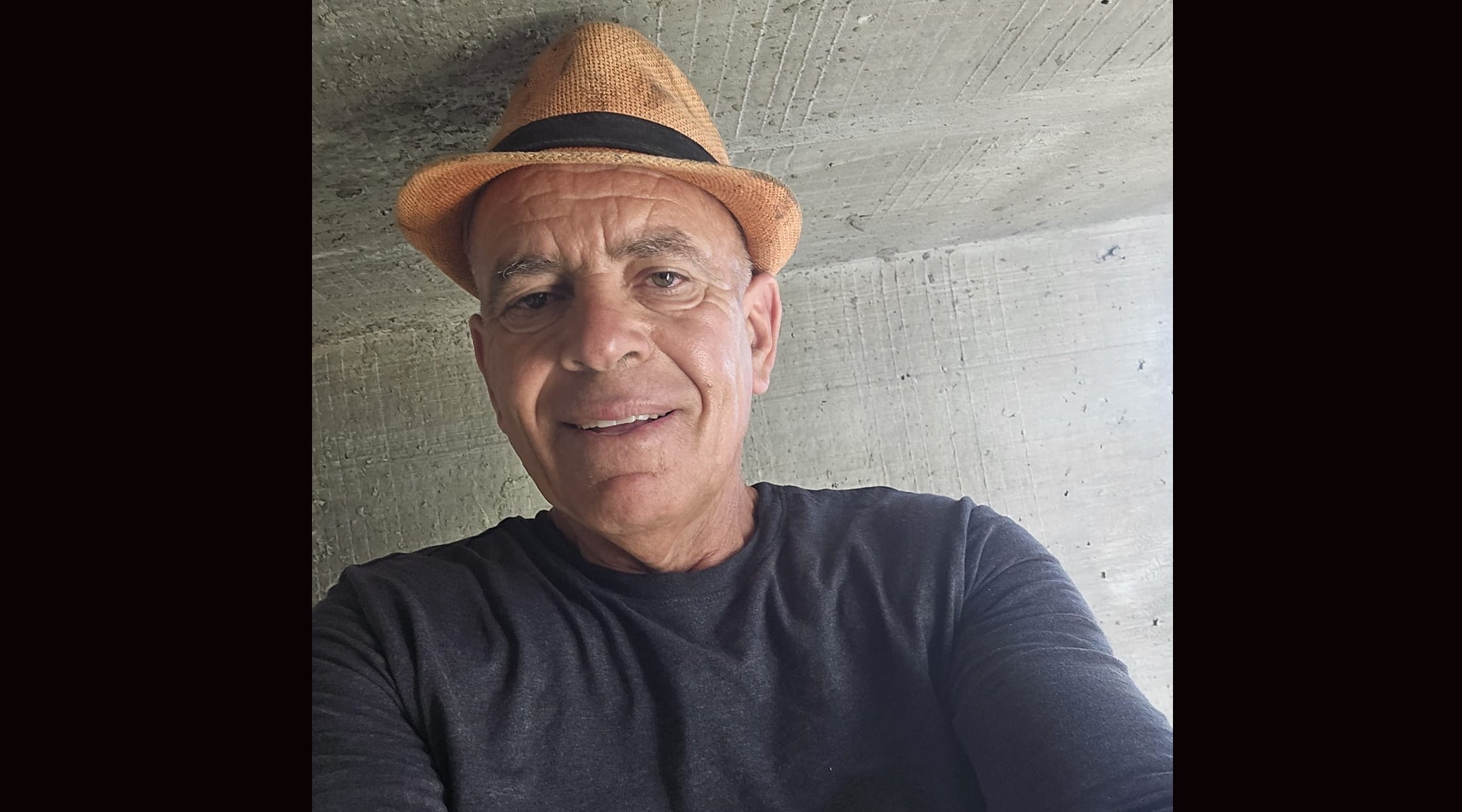
Jamal Diab, a resident of Tamra, said he did not put stock in a viral video purporting to document Jewish jubilation at a missile strike on his town. (Courtesy Diab)
He dismissed the viral video. “We’re not paying that guy attention. It’s not representative.”
Inside the mourning tent, there were brief incidents in which local Arab speakers took the mic to make inflammatory remarks, but Diab said those comments were quickly shut down by others present.
“Nobody wanted to hear that kind of incting rhetoric,” he said. “The overwhelming majority of people were so lifted up by the embrace from the Jewish sector. You could really see it on their faces. And the [Jewish visitors] didn’t just stay for a few minutes. They stayed for a long time.”
This wasn’t the first time Ner-David, a rabbi and writer, had attended mourning gatherings in Arab towns. Most previous occasions had involved victims of organized crime, with the exception of one woman who was killed in a Hezbollah rocket attack in November.
“At that time there was never this idea that people were celebrating the missiles falling on her village,” she said.
On Wednesday, she arrived in Tamra in a dual capacity, representing both Standing Together and Rabbis for Human Rights. She was part of a delegation of about 40 Jewish and Arab members of Standing Together, which promotes Arab-Jewish cooperation and social justice, and has called to end the war. The group read a joint statement in Arabic and Hebrew.
Among the mourners was a relative of the deceased who is the only woman judge in Israel’s Muslim religious courts. Shada, the 20-year-old daughter who was killed, had studied law at the University of Haifa and reportedly admired the judge, hoping to follow in her footsteps, as well as that of her father’s Raja, also a lawyer.
Shada’s grandfather had also been active in Arab-Jewish coexistence efforts. At his home, where some of the women mourned alongside her grandmother, a painting hangs on the wall depicting a rabbi, a sheikh and a priest walking together in front of a mosque, a church and a synagogue.
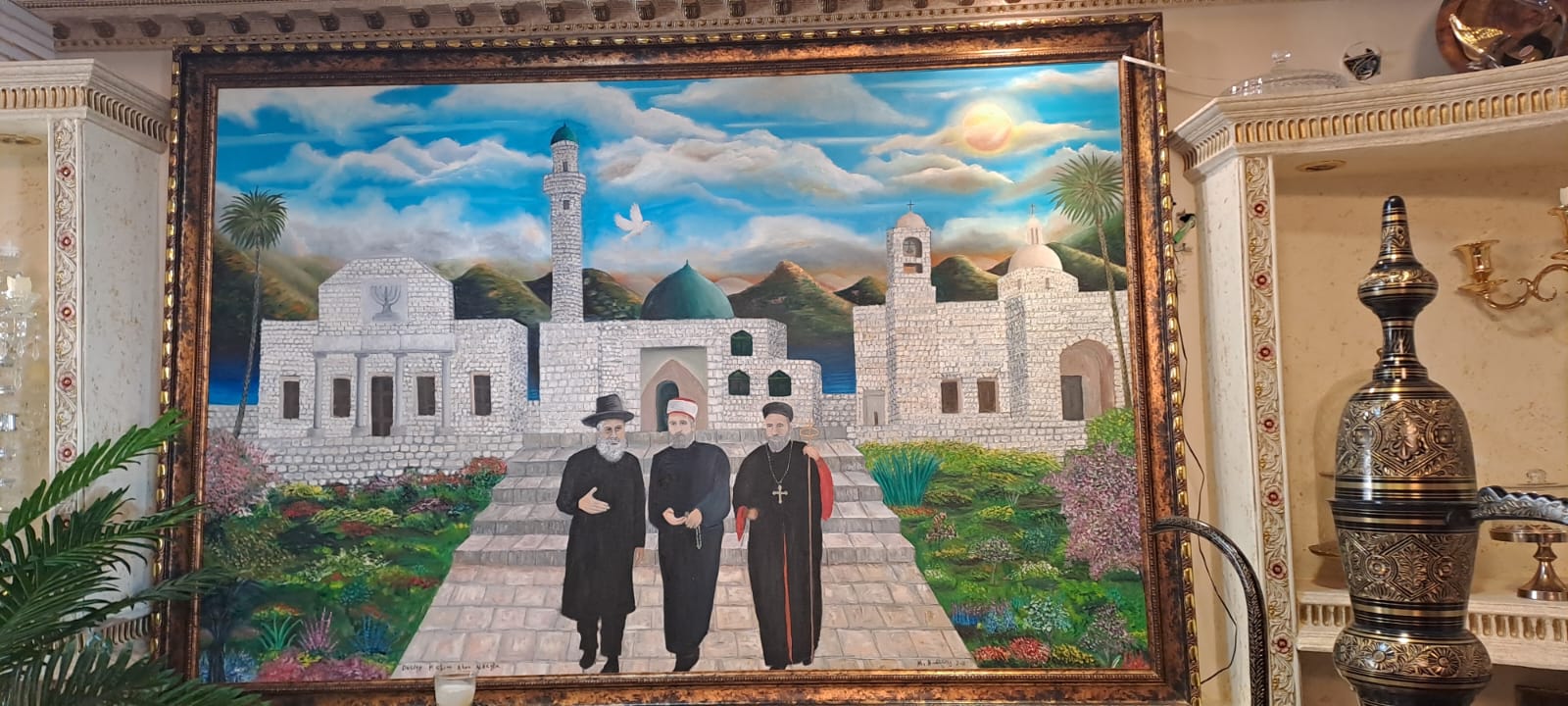
A picture circulating on social media shows a painting of coexistence that hung in the home of the Khatib family in Tamra before it was hit by an Iranian missile on June 14, 2025. (Courtesy Haviva Ner-David)
Raja Khatib, the bereaved husband and father, called for those who appeared in the hate video to be prosecuted. Other Tamra residents noted that Arab Israelis have previously been arrested over far less.
Police said they are “making serious efforts” to locate the individuals behind the clip but cited the lack of visible faces or identifying features. They added that it could have been filmed in places as far away as Haifa or even Tel Aviv.
Like many others from the region, Ner-David questioned whether the offensive video had in fact come from nearby Mitzpeh Aviv, the small community where it was first attributed, noting it was not known for racism.
On Sunday, Ron Shani, Mitzpeh Aviv’s local council head, denied any connection, saying the clip couldn’t have been filmed from his community due to its lack of tall buildings and the view in the footage.
Shani paid a condolence visit to the Khatib family and to Tamra mayor Moussa Abu Roumi. Two days later, a large sign went up in a Tamra traffic circle that read: “The people of Mitzpeh Aviv hold the hands of the people of Tamra.”
Sarit Riv-Palti, a psychologist from Emek Jezreel, met with first responders in Tamra to hold individual sessions. “We held in-depth conversations that included emotional release and psycho-educational tools to normalize stress reactions,” she said. “We began structuring a narrative of coping and identified both internal and external sources of strength. It was a meaningful experience. Those I met were full of appreciation for the support. They are moving and inspiring people.”
Gillan said her group of volunteers had grown to nearly 100, all required to have at least a master’s degree and significant trauma experience. She expected their involvement to last for several months.
“It will take a long time to heal the wounds and the trauma,” Gillan said. “But we’re in it for the long haul. This is in our souls. We live in this country together. We are neighbors.”
Diab said the scale of Jewish solidarity in Tamra was unlike anything he had ever seen.
“We in Tamra are feeling this for the first time. The whole time during this war we didn’t know what was happening on the other side, or what they were feeling. Today we knew,” he said. “It made us feel there is still a possibility of living together and being in a country where Arabs and Jews are one, living together, and that one will help the other.”
JTA has documented Jewish history in real-time for over a century. Keep our journalism strong by joining us in supporting independent, award-winning reporting.
